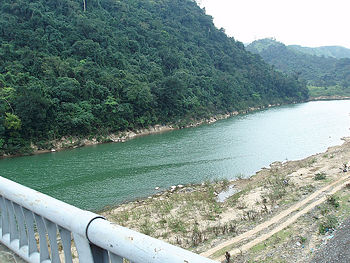Ho Chi Minh trail: Difference between revisions
Jump to navigation
Jump to search

imported>Howard C. Berkowitz mNo edit summary |
John Leach (talk | contribs) (improve; has been reduced to basics and could use more content) |
||
| Line 1: | Line 1: | ||
{{subpages}} | {{subpages}} | ||
{{Image|HoChiMinhTrail DrakongBridge.jpg|right|350px|A view from the Dakrong Bridge, the start of the Ho chi Minh Trail.}} | {{Image|HoChiMinhTrail DrakongBridge.jpg|right|350px|A view from the Dakrong Bridge, the start of the Ho chi Minh Trail.}} | ||
The '''Ho Chi Minh Trail''' was the name given to a complex multi-route means of conveying troops, arms and supplies from North to South Vietnam during the [[Vietnam War]]. The routes were mostly mountain and jungle paths which went through Laos and Cambodia. The trail was first mapped out in 1959 following the decision by North Vietnam to use guerilla warfare in its campaign to unify the two Vietnamese states. | |||
==References== | |||
{{reflist}} | |||
[[Category:Reviewed Passed if Improved]] | |||
Latest revision as of 04:46, 2 April 2024
The Ho Chi Minh Trail was the name given to a complex multi-route means of conveying troops, arms and supplies from North to South Vietnam during the Vietnam War. The routes were mostly mountain and jungle paths which went through Laos and Cambodia. The trail was first mapped out in 1959 following the decision by North Vietnam to use guerilla warfare in its campaign to unify the two Vietnamese states.
